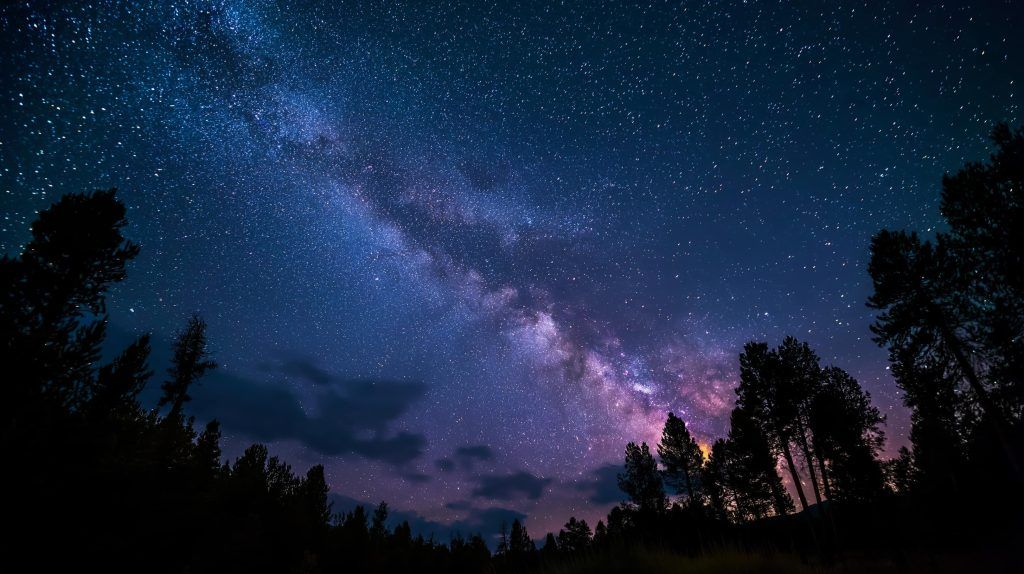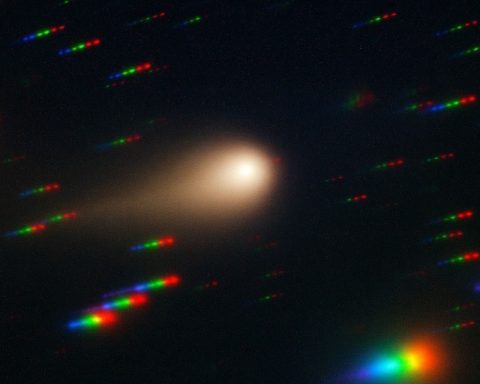Astronaut Homecoming & ISS Updates
- Crew-10 Returns Safely: NASA’s SpaceX Crew-10 astronauts Anne McClain, Nichole Ayers (USA), Takuya Onishi (JAXA), and Kirill Peskov (Roscosmos) splashed down off California’s coast on Saturday, Aug. 9, after ~148 days in orbit [1] [2]. This marked the first NASA crew mission to land in the Pacific (previous U.S. crew splashdowns were off Florida) [3] [4]. Recovery teams quickly secured the Crew Dragon Endurance capsule and airlifted the crew for medical checks and return to Johnson Space Center. “Splashdown! Crew-10 is back on Earth… marking the completion of another successful flight,” said NASA Acting Administrator Sean Duffy, praising the mission’s role as a “building block” toward long-duration exploration of the Moon and Mars [5].
- ISS Seat Swap & Cooperation: With Crew-11 already aboard ISS, the station remains at a full 7-member crew [6]. Notably, this rotation continues the U.S.-Russian “seat swap” arrangement: each SpaceX Crew Dragon carries a Russian cosmonaut and each Soyuz carries a NASA astronaut, ensuring both nations have personnel onboard at all times [7]. In a post-splashdown briefing, NASA’s ISS Deputy Manager Dina Contella confirmed that seat-swap agreements are now in place through one flight in 2027, following recent talks during Roscosmos chief Dmitry Bakanov’s visit [8] [9]. “We did have a good exchange between the two agencies and our cooperation [is] continuing on ISS,” Contella noted [10] – underscoring that despite geopolitical strains, NASA and Roscosmos remain committed to operating the ISS together. (During Bakanov’s visit to Florida – the first NASA–Roscosmos head meeting in 8 years – both sides even agreed to continue using ISS until 2028 and discussed plans for its eventual deorbit in 2030 [11] [12].)
Rocket Launch Drama & Satellite Missions
- SpaceX’s Scrub Streak: SpaceX attempted to launch 24 of Amazon’s Project Kuiper internet satellites on a Falcon 9 from Cape Canaveral multiple times over the weekend, only to be foiled four days in a row [13]. After minor rocket issues on Aug. 7–8 and bad weather on Aug. 9, the Aug. 10 try was halted just 90 seconds before liftoff due to rough seas at the booster recovery site [14]. “We have no-go conditions on recovery weather… standing down,” the launch director announced as they called a hold at T–30 seconds [15]. The mission (KF-02) was reset for Monday morning, Aug. 11, with a 27-minute window opening at 8:35 a.m. ET [16]. If successful on Aug. 11, it will be SpaceX’s 100th launch of 2025 (the 97th Falcon 9 flight, plus 3 Starship tests) [17] [18] – already on pace to shatter last year’s record of 138 launches. The Kuiper payload is crucial for Amazon’s planned broadband megaconstellation, and this second batch of 24 satellites will bring the total Kuipers in orbit to 102 [19]. (Meanwhile, SpaceX’s own Starlink launch from Vandenberg, Calif., was also pushed from Aug. 8 to Aug. 11/12 due to schedule and weather constraints [20].)
- ULA’s Vulcan Ready for Debut Mission: United Launch Alliance is gearing up for the first national security launch of its new Vulcan rocket on Aug. 12. CEO Tory Bruno touted the upcoming USSF-106 mission as “what we designed this rocket to do,” noting it will directly inject two Space Force satellites to GEO orbit – one of ULA’s most challenging, longest-duration missions to date [21]. This flight will also be only the third Vulcan launch ever. After overcoming development delays (engine issues and payload holdups) [22], ULA is now ambitiously aiming for 9 more launches by year’s end using Vulcan and the remaining Atlas V rockets [23]. Many of those will loft Amazon’s Kuiper satellites (ULA has 7 Atlas V missions booked for Kuiper) and Boeing’s CST-100 Starliner crew capsules [24]. Bruno says ULA has a “stockpile” of vehicles ready and is targeting two launches per month by early 2026 to stay competitive [25].
- Ariane 6 Set for Liftoff: In Europe, Arianespace is preparing to launch its heavy-lift Ariane 6 rocket on August 12/13, carrying two major payloads from Kourou. This mission will deploy EUMETSAT’s MetOp-SG A1 meteorology satellite (the first of a new generation) along with the EU’s Copernicus Sentinel-5 Earth-observation satellite [26]. It will mark the third launch of an Ariane 6, a pivotal step as Europe transitions from the retired Ariane 5. (The 4,000-kg MetOp-SG A1 is the size of a small truck and one of six in its series planned through 2040 [27].) A successful flight would bolster Europe’s launch cadence as Ariane 6 moves toward full operational status.
- Rocket Lab’s Perfect Record: Small-launch specialist Rocket Lab notched its 11th successful launch of 2025, maintaining a 100% success rate so far [28]. On Aug. 5 New Zealand time, its Electron rocket orbited a Japanese radar imaging satellite (QPS-SAR-12 “Kushinada-I”) for startup iQPS [29]. Codenamed “The Harvest Goddess Thrives,” the mission helps keep Rocket Lab on a record pace and on track to debut its larger Neutron rocket by late 2025 [30]. (Executives say Neutron’s development is on a “green light” path with virtually zero schedule margin to hit a first flight by year’s end [31].)
- Blue Origin Back in Action: After a year-long pause, Jeff Bezos’ Blue Origin resumed crewed suborbital flights earlier this month. On Aug. 3, the company’s New Shepard rocket successfully flew mission NS-34, carrying 6 civilian space tourists – including crypto billionaire Justin Sun – to the edge of space and back [32]. Liftoff from West Texas at 8:43 a.m. ET sent the group past 100 km altitude for a few minutes of weightlessness before a safe parachute landing. “It was an honor to see so many nations represented on our flight today,” Blue Origin VP Phil Joyce said afterward, noting the unifying effect of seeing “our fragile planet” from space [33]. This flight, featuring passengers from multiple countries, highlights the rebound of Blue Origin’s space tourism program following a booster anomaly in 2022.
Moon Exploration & Global Programs
- China’s Lunar Lander Test: China took a major stride toward its goal of landing taikonauts on the Moon by 2030. On Aug. 6, the China Manned Space Agency performed the first-ever drop-and-takeoff test of its crewed lunar lander, called “Lanyue” (“embracing the Moon”) [34]. In the test at a Hebei Province facility, the two-person Lanyue lander was dropped to simulate a lunar touchdown, then re-ignited to ascend – demonstrating off-Earth landing and launch in one sequence [35] [36]. Huang Zhen of CASC explained the focus on a smooth landing: “For our manned space missions, we must ensure that astronauts land on the lunar surface very comfortably and smoothly” [37]. This verified the lander’s performance under various scenarios (engine relight, cushioning, etc.) and is a key milestone in China’s Artemis-rivaling human lunar program [38]. It follows other recent progress like a pad-abort test of China’s next-gen crew capsule and the launch of Tianwen-2, an asteroid sample mission [39]. Chinese officials are confident these steps will put “footprints on lunar soil” before 2030 [40].
- Roscosmos & Lunar Plans: Russia had no launches during Aug 9–11, but stayed in the news with space policy moves. During Roscosmos chief Bakanov’s U.S. visit for Crew-11’s launch, Russia quietly reaffirmed its commitment to partner with China on an International Lunar Research Station (ILRS) – a planned joint Moon base – even after last year’s Luna-25 lander crash [41]. Russian officials have also outlined upcoming Luna-26 and Luna-27 missions in the next few years [42], aiming to regain momentum in lunar exploration. Notably, Moscow and Washington continue to diverge in their diplomatic frameworks: as Russia and China push ILRS, NASA’s Artemis Accords coalition continues to grow (Senegal became the latest country to sign the U.S.-led Accords in late July) [43]. This underscores a bifurcated global space landscape – yet on the ISS, Russian and American crews still work side by side daily, and both nations are coordinating on plans to safely deorbit the aging station by 2030 [44].
- India’s Ambitious Leap: The Indian Space Research Organisation (ISRO) is riding high after the successful July 30 launch of NISAR, the joint NASA-ISRO Earth-mapping satellite (notably the world’s costliest Earth-imaging mission) [45]. In a speech on Sunday (Aug. 10) in Chennai, ISRO Chairman V. Narayanan highlighted an upcoming historic mission: India will launch a 6,500-kg American-built communications satellite on an Indian rocket – a striking reversal of the 1960s, when the US helped launch India’s first sounding rocket [46]. “What a significant growth it is,” Narayanan remarked, framing it as a symbol of how far India has come [47]. He laid out bold plans to triple India’s satellite fleet (from ~56 to 150+ satellites) within 2–3 years [48], advance the Gaganyaan crewed capsule toward orbit, and even build an Indian space station by 2035 [49]. By 2040, India expects to “match all developed countries” in full-spectrum space capabilities [50]. These aspirations follow ISRO’s recent triumphs like Chandrayaan-3’s south-pole Moon landing and the Aditya-L1 solar probe, underscoring India’s emergence as a major space player.
- European Updates: While Europe’s focus this week is on the Ariane 6 launch, there were notable diplomatic and commercial moves recently. On Aug. 7, Senegal became the 27th signatory of the Artemis Accords, as NASA hosted a ceremony to welcome the African nation to the lunar exploration pact. The European Space Agency (ESA) is a key Artemis partner and also pursues its own Moon projects (e.g. the Argonaut lander). In the commercial arena, Airbus Defence & Space announced progress on the ESRO-supported Argonaut lunar cargo lander, and European industry continues to collaborate on Artemis (such as ESA’s service modules for NASA’s Orion). *(No major ESA missions launched on Aug 10–11; the spotlight remains on the upcoming Ariane 6 flight and ESA’s ongoing Euclid and Juice science missions.)
Science & New Discoveries
- Nearby Exoplanet Find: Astronomers using the James Webb Space Telescope (JWST) revealed strong evidence of a new exoplanet just 4 light-years away – orbiting Alpha Centauri A, the closest Sun-like star [51] [52]. Using JWST’s mid-infrared coronagraph, the team directly imaged a faint object ~10,000 times dimmer than Alpha Cen A, at roughly 2 AU from the star [53] [54]. The candidate appears to be a gas giant planet in Alpha A’s habitable zone (though as a giant, not itself habitable) [55] [56]. If confirmed, it would be the first planet ever imaged around a Sun-twin and one of the closest exoplanets to Earth. “With this system being so close to us, any exoplanets found would offer our best opportunity to collect data on planetary systems other than our own,” said Dr. Charles Beichman of NASA’s Exoplanet Science Institute [57]. The discovery – reminiscent of the fictional Alpha Centauri world in Avatar – showcases JWST’s powerful new ability to directly observe planets in nearby star systems [58] [59].
- Satellites Tackle Wildfire Smoke: A new technological breakthrough is leveraging satellites to map wildfire smoke in three dimensions, improving air quality forecasting. Scientists from U.S. universities and NOAA demonstrated a method to determine smoke plume heights and density using combined satellite data [60]. Previously, satellites only gave a 2D view of smoke, leaving uncertainty about how close hazardous smoke was to the ground [61] [62]. Now, by integrating multi-angle and LIDAR observations, researchers can tell if a smoke layer is high aloft (less harmful) or lingering near the surface where people breathe it [63]. This 3D mapping is being evaluated by the EPA to enable neighborhood-scale smoke alerts, potentially revolutionizing public health warnings [64]. The advance comes just in time, as 2025 is seeing another severe wildfire season with smoke impacting millions. After several summers of record-breaking fires (e.g. Canada’s 2023–25 fires that blanketed cities in haze [65]), this innovation is a prime example of satellites providing actionable information for everyday life.
- Other Notable Findings: NASA’s astronomers released a new image of the interstellar comet 3I/ATLAS, the third known visitor from outside our solar system, and updated its trajectory [66]. In solar science, researchers are closely watching the Sun’s activity as it approaches the 2025 solar maximum; one study this week examined how solar storms and cyberattacks can both trigger power grid blackouts, urging improved diagnostics to tell them apart [67] [68]. And in space medicine, a publication from the ISS program detailed how microgravity causes subtle changes in human eyes and cells, data that Crew-10 contributed to during their mission [69]. Each of these developments highlights the breadth of space-related research – from deep space discoveries to practical Earth applications – that made news over this two-day period.
Commercial & Industry Developments
- Satellite Delivered for Indonesia: Boeing announced it has delivered the new Satelit Nusantara Lima (SNL) communications satellite to Indonesia’s PSN (Pasifik Satelit Nusantara) [70]. This high-throughput satellite, built on Boeing’s 702MP platform, will provide 160 Gbps of broadband capacity across Indonesia’s 17,000 islands and neighboring regions [71] [72]. It features advanced beam-forming to dynamically allocate bandwidth where needed – whether dense cities or remote villages – enabling faster internet and emergency connectivity across the archipelago [73] [74]. The SNL satellite is slated for launch next month from Florida and will enter service in 2026 after on-orbit tests [75]. “This satellite will empower communities, schools, and businesses that have never had reliable access before… making sure no one is left behind as Indonesia grows,” said Adi Rahman Adiwoso, CEO of PSN Group [76]. Boeing’s satellite president Ryan Reid noted the company’s long partnership with Indonesia (dating to the Palapa satellites of the 1970s) and said with Nusantara Lima they’re “proud to continue that legacy” of expanding connectivity in the region [77].
- Contracts and Ventures: NASA on Aug. 11 announced it selected six companies to study new orbital transfer vehicles – innovative space tugs to deploy satellites more cheaply to hard-to-reach orbits [78]. The firm-fixed-price awards cover 9 conceptual studies with a combined value up to $1.4 million [79], aiming to spur lower-cost delivery of payloads to various orbits (from LEO to cislunar space). In the lunar economy, Intuitive Machines (fresh off its second Moon lander mission in June) revealed plans to build a lunar communications satellite network in-house, rather than buying from external suppliers [80]. The Houston-based company intends to deploy its own small sats around the Moon to relay data for future landers and rovers – an effort to support NASA’s Artemis program and monetize cislunar comms. Additionally, SpaceX was awarded a $70 million Air Force contract to demonstrate point-to-point orbital delivery of military cargo by late 2026 (using Starship), potentially revolutionizing global logistics – though details emerged just outside the Aug 10–11 window. These contracts underscore the growing role of commercial players in cutting-edge projects, from lunar infrastructure to high-speed Earth transport.
- Industry Milestones: Beyond launch successes, space companies hit notable milestones. SpaceX celebrated the 10th anniversary of its first booster landing (achieved in 2015) during this period, highlighting the impact of reusability on launch rates. Relativity Space reported progress on its fully 3D-printed Terran R rocket, targeting a 2026 debut to challenge SpaceX in the medium-heavy launch class. And in aerospace finance news, satellite operator Eutelsat received final approvals for its merger with OneWeb, clearing the way to form a single multi-orbit broadband provider. While these developments were overshadowed by the week’s headline events, they form part of the larger commercial momentum in the space sector.
Sources: This report compiles information from official agency releases, trusted news outlets, and expert commentary. Key sources include NASA press releases [81] [82], Spaceflight Now [83] [84], Space.com [85] [86], SpaceNews [87] [88], SatNews [89], SpacePolicyOnline [90] [91], and other referenced publications as noted above. Each cited link provides further details on the respective news item for readers seeking more information.
References
1. spaceflightnow.com, 2. spaceflightnow.com, 3. spaceflightnow.com, 4. spacepolicyonline.com, 5. www.nasa.gov, 6. ts2.tech, 7. ts2.tech, 8. spacepolicyonline.com, 9. spacepolicyonline.com, 10. spacepolicyonline.com, 11. spacepolicyonline.com, 12. spacepolicyonline.com, 13. spaceflightnow.com, 14. spaceflightnow.com, 15. spaceflightnow.com, 16. spaceflightnow.com, 17. www.space.com, 18. www.space.com, 19. spaceflightnow.com, 20. spaceflightnow.com, 21. ts2.tech, 22. ts2.tech, 23. ts2.tech, 24. ts2.tech, 25. ts2.tech, 26. spaceflightnow.com, 27. spaceflightnow.com, 28. ts2.tech, 29. ts2.tech, 30. ts2.tech, 31. ts2.tech, 32. ts2.tech, 33. ts2.tech, 34. www.space.com, 35. www.space.com, 36. www.space.com, 37. www.space.com, 38. www.space.com, 39. ts2.tech, 40. ts2.tech, 41. ts2.tech, 42. ts2.tech, 43. ts2.tech, 44. ts2.tech, 45. ts2.tech, 46. ts2.tech, 47. ts2.tech, 48. ts2.tech, 49. ts2.tech, 50. ts2.tech, 51. www.space.com, 52. www.space.com, 53. www.space.com, 54. www.space.com, 55. www.space.com, 56. www.space.com, 57. www.space.com, 58. www.space.com, 59. www.space.com, 60. ts2.tech, 61. www.space.com, 62. www.space.com, 63. ts2.tech, 64. ts2.tech, 65. ts2.tech, 66. webbtelescope.org, 67. www.space.com, 68. www.space.com, 69. www.nasa.gov, 70. news.satnews.com, 71. news.satnews.com, 72. news.satnews.com, 73. news.satnews.com, 74. news.satnews.com, 75. news.satnews.com, 76. news.satnews.com, 77. news.satnews.com, 78. www.nasa.gov, 79. www.nasa.gov, 80. spacenews.com, 81. www.nasa.gov, 82. spacepolicyonline.com, 83. spaceflightnow.com, 84. spaceflightnow.com, 85. www.space.com, 86. www.space.com, 87. ts2.tech, 88. ts2.tech, 89. news.satnews.com, 90. spacepolicyonline.com, 91. spacepolicyonline.com










